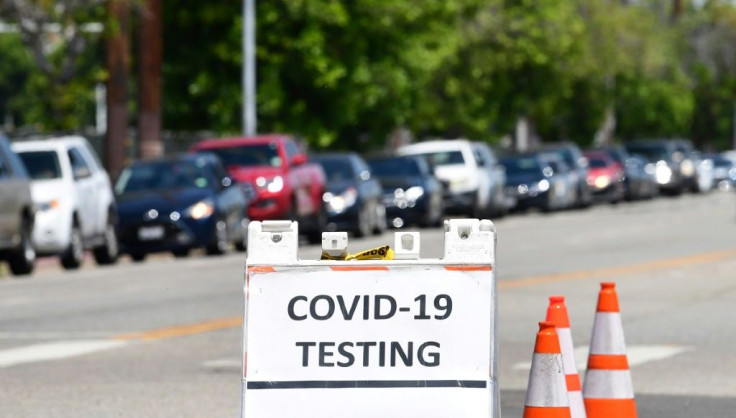Trump Administration Downplaying Coronavirus? Mike Pence Talks Media's Role In Exaggerating Second Wave Fears

KEY POINTS
- Pence led administration response to the pandemic, which was slow in acquiring supplies and ramping up testing
- Trump says. "If we stopped testing right now, we’d have very few cases, if any”
- Pence accused the media of trying to scare the public
Vice President Mike Pence, who was put in charge of the administration’s coronavirus response, says fears of a second wave of infection are overblown despite record numbers being reported by nine states and U.S. deaths from COVID-19 heading toward 120,000.
A Washington Post analysis showed nine states reported single-day or seven-day highs for newly confirmed cases Tuesday. North Carolina reported a record new-case seven-day rolling total for the 15th straight day while Alabama reached a new seven-day high for the seventh time in 15 days. Single day records were reported by Florida, Texas, Arizona, Nevada, Oklahoma, Oregon and South Carolina. Nineteen states have seen their numbers go up in recent weeks.
President Trump said Tuesday the only reason infections are increasing is because of ramped up testing.
“If you don’t test, you don’t have any cases. If we stopped testing right now, we’d have very few cases, if any,” he said.
The Centers for Disease Control and Prevention estimates new hospitalizations for COVID-19 will range between 2,500 and 12,000 a day by July 1.
In a Wall Street Journal op-ed published Tuesday, Pence maintained national infection rates have stabilized at 6%, with only three areas reporting positive results higher than 10%.
“The truth is that we’ve made great progress over the past four months,” Pence wrote, saying the daily total case rate has fallen to 20,000 from 30,000 in April.
Trump continually downplayed the seriousness of the pandemic, initially saying more people die of flu annually, disagreeing with models predicting spread of the disease and deaths, and refusing to wear a mask during public appearances. He has scheduled a massive rally for Saturday in Tulsa, Oklahoma, despite efforts by locals to block the gathering.
The U.S. was slow to respond to the spread of coronavirus, which initially surfaced domestically in January. Healthcare facilities were caught short on needed supplies and the first testing kits were contaminated, hobbling early efforts to contain the disease and forcing a shutdown of the economy in mid-March.
Pence blamed news coverage for exaggerating fears a of a second wave of the disease as states move to reopen their economies.
“The media has tried to scare the American people every step of the way, and these grim predictions of a second wave are no different,” Pence wrote.
Both U.S. infections and the death rate account for more than a quarter of the cases worldwide. By early afternoon Wednesday, more than 2.14 million infections had been confirmed in the U.S. and at least 117,033 people had died from COVID-19 with no vaccine or cure on the immediate horizon despite scores of clinical trials.
Rather than blaming the media experts told the Washington Post the administration should be preparing for the next pandemic.
“In terms of the needless loss of life, I think this is the biggest failure in American history,” Gregory Treverton, who chaired the National Intelligence Council from 2014 to 2017, told the Post while noting more people died in the 1918 influenza pandemic. “With COVID-19, we knew lots of things we could have done, like producing tests early on so that we could track and trace the virus. And we just didn’t do it.”
Coronavirus mitigation efforts have turned partisan. Trump moved his Republican nomination acceptance speech from Charlotte, North Carolina, to Jacksonville, Florida, because North Carolina Gov. Roy Cooper insisted Republicans draw plans for social distancing and limit the number the delegates who would be allowed into the Spectrum Center.
House Speaker Nancy Pelosi has told lawmakers any congressman who refuses to wear a mask at committee meetings will be denied entry but have the option to participate virtually.
© Copyright IBTimes 2025. All rights reserved.






















